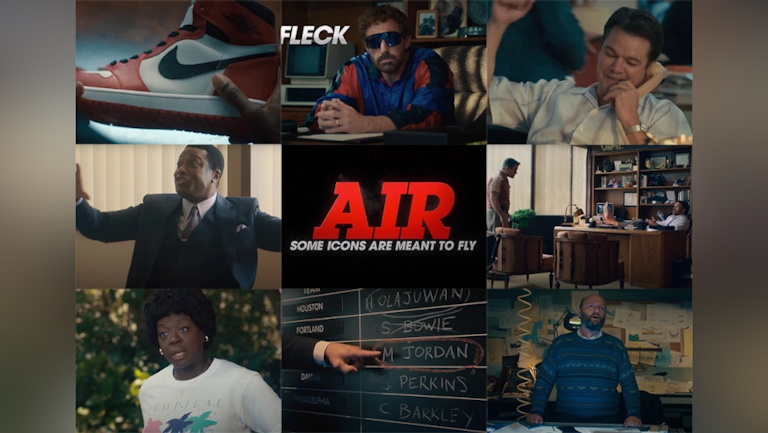Shopping Bag (0)
Your shopping bag is empty


Recruiting superstar talent doesn’t guarantee success for a brand, Seun Areoye, trends editor at Amplify looks at the evolving role of the influencer and the power of authentic partnerships.
Directed by Ben Affleck, the well-awaited ‘Air’ movie has now been released worldwide, uncovering the drama behind what can only be considered one of the greatest brand partnerships to come about between Nike and Michael Jordan.
But superstar talent alone doesn’t guarantee success, as seen with some collaborations of the same ilk.
We’ve just witnessed adidas and Beyoncé calling it quits on their partnership that struggled to ever really take off, there are many questioning what went wrong, considering the size and influence of the two parties can easily be paralleled to the above example. There’s no question that this is a collaboration that a decade prior would’ve set stores ablaze, but with a consumer that’s more savvy, demanding more than a name from a collab, there’s an understanding as to why it went wrong, but also key indicators that show brands and individuals how you can get it right.
Over time, the role and definition of a ‘social media influencer’ has certainly evolved. With the rise of Instagram in the early 2010s, came the rise of the primitive influencer, a new way of marketing products to tech-savvy consumers. I’m sure I don’t have to remind you all of the days when weight loss teas took over Instagram feeds, I can’t imagine there are many missing those dark times.
Whilst that kind of influencer is pretty much dead and easy to see through, it opened up an opportunity for brands to challenge themselves, and see influencers more as partners and collaborators, showcasing who they are and what they stand for. It also put influencers under more scrutiny. With great power comes great responsibility, and influencers are under greater pressure to be selective about the brands they work with, ensuring that the partnerships they enter into are align with their values and way of life.
All hope isn’t lost for brands, there are a plethora of examples where talent has been utilised successfully to elevate a brand’s profile.
One of the best-in-class examples would have to be Dr. Martens, and how they’ve managed to strengthen their proximity with music, particularly in Camden’s punk and rock scene.
Let’s play a quick game of word association…
When I say ‘Music in Camden’, what do you think? Amy Winehouse? Mohawks? Piercings? I’m pretty sure Dr. Martens boots will not be far down that list. Whether long and skinny or short and chunky - the boots, that is - they seem to speak to a wide range of consumers, both through product and storytelling. Whether it’s the DMs Boot Fair in Brick Lane alongside NTS, a tangible case study of showcasing the range of styles, or placing Jyoty on a billboard in Camden to not only celebrate her journey thus far, but also spotlight the iconic 1460 boot, Dr. Martens seem to always hit the nail on the head where talent collaborations are concerned.
Although it’s taken time and investment, the Dr. Martens brand never looks out of place where music is present, isn’t that the dream for every brand?
So when looking to market products through ‘influencers’, a few things are truly important to remember:
Influencer does not necessarily mean lots of followers. Whilst some influencers may have large followings, being an influencer is purely about…you guessed it…influence. If a creator has 5,000 followers and a very strong average rate of engagement, they can be more valuable to a brand than a creator with 50,000 followers with a weaker engagement rate.
Step off the centre stage. People care about people more than the brands they’re working with. As a result, brands must step into the worlds of the influencers they have partnered with, to allow consumers to see how the brands make sense in the world they’re familiar with.
When working with talent, especially for the first time, sales aren’t the only goal. Building sentiment, advocacy and ultimately brand love takes time and investment to nurture those consumer relationships. Talent partnerships help boost brand affinity, which holds a longer-term benefit than a one-time purchase.
All in all, talent partnerships and collaborations need to be treated with the same vigour and respect as that yearly TVC, or huge billboard. They’re equally as tasking, and can be massively rewarding if they’re executed correctly. Just think of the Jordan brand, a talent collaboration that doesn’t even feel like one, due to the sheer size the brand has reached.
Seun Areoye is trends editor at Amplify
To read the full article visit Little Black Book.